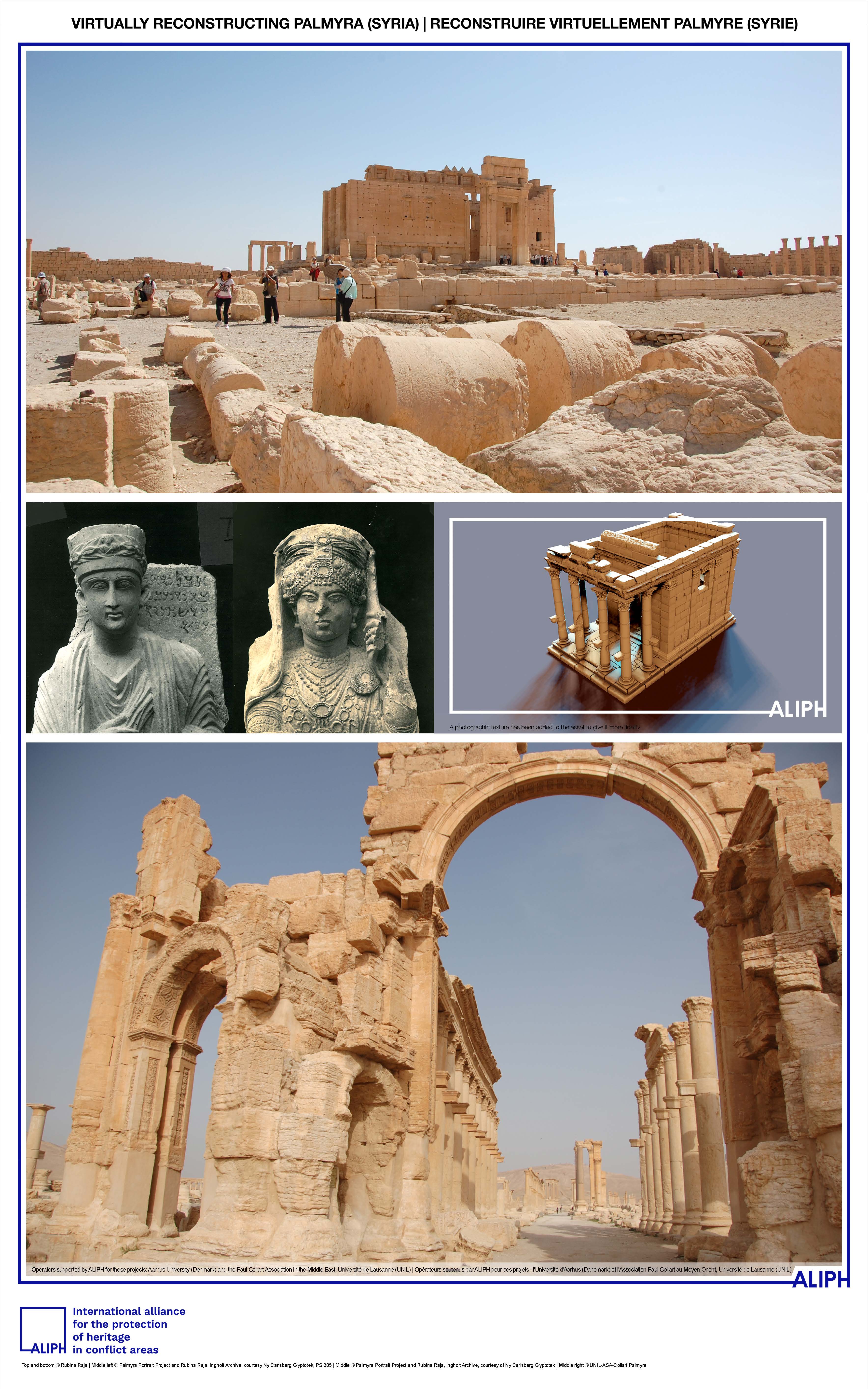Palmyra projects headed by professor Rubina Raja featured in new ALIPH photo exhibition
The Palmyra projects at Aarhus University and their vital work with the Syrian cultural heritage holds an important place in the new exhibition ‘Protecting Heritage to Build Peace’. The ALIPH Foundation is behind the immersive photo exhibition that opened in Geneve in September.

ALIPH works with its partners to rehabilitate monuments, sites, museums, and collections of artifacts or manuscripts. To highlight this important work, ALIPH recently opened the new photo exhibition ‘Protecting Heritage to Build Peace’ consisting of 16 panels. These showcase a selection of the 160 projects from about 30 countries that the foundation has funded over the years.
One such project is the Archive Archaeology: Preserving and Sharing Palmyra’s Cultural Heritage through Harald Ingholt’s Digital Archives, headed by professor Rubina Raja. The Syrian conflict has caused suffering to people and their heritage alike, and the oasis city of Palmyra and its rich cultural heritage has been greatly damaged. Based on the research conducted within the Archive Archaeology project – and the two adjacent projects, the Palmyra Portrait Project (2012–2021, funded by the Carlsberg Foundation) and Circular Economy and Urban Sustainability in Antiquity (2020–, funded by the Augustinus Foundation and the Carlsberg Foundation) – it has been possible to recontextualize and recreate artefact assemblages that have been affected by the war. This has led to a panel in the new exhibition that explores virtual reconstructions in Palmyra.
The ALIPH photo exhibition will first be featured at Quai Gustave-Ador in Geneve throughout September. The exhibition is accompanied by an augmented reality experience that can be explored from anywhere. You can read more about it and find a link to download the exhibition app here.
